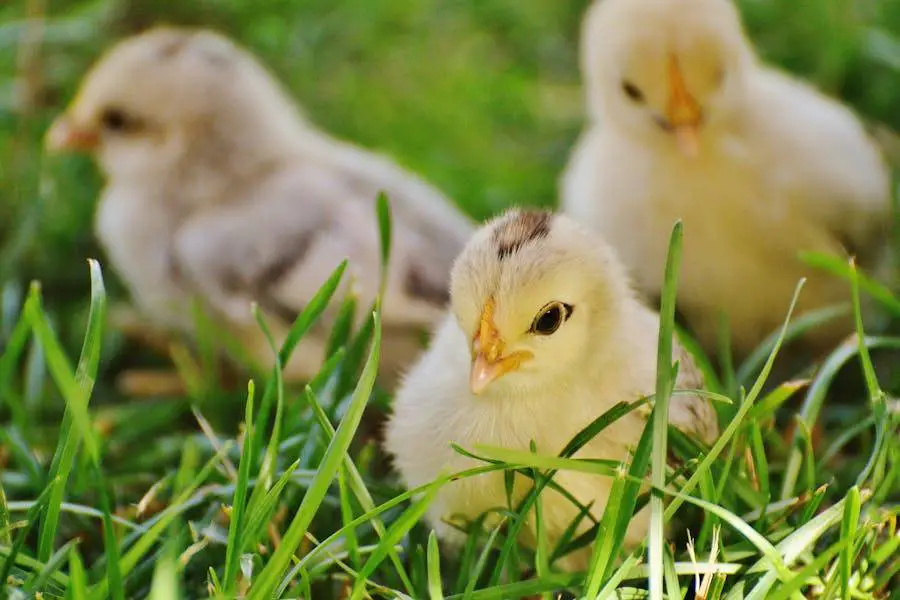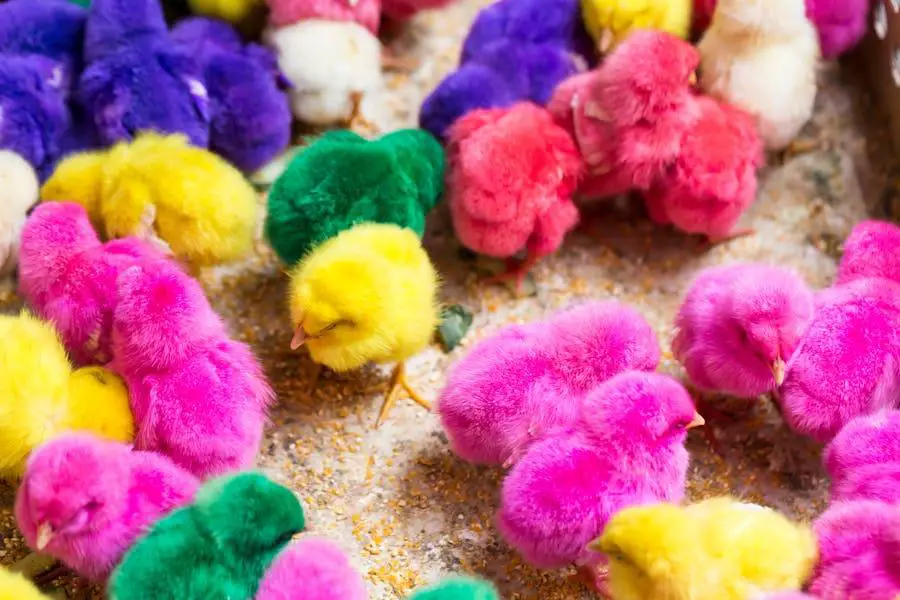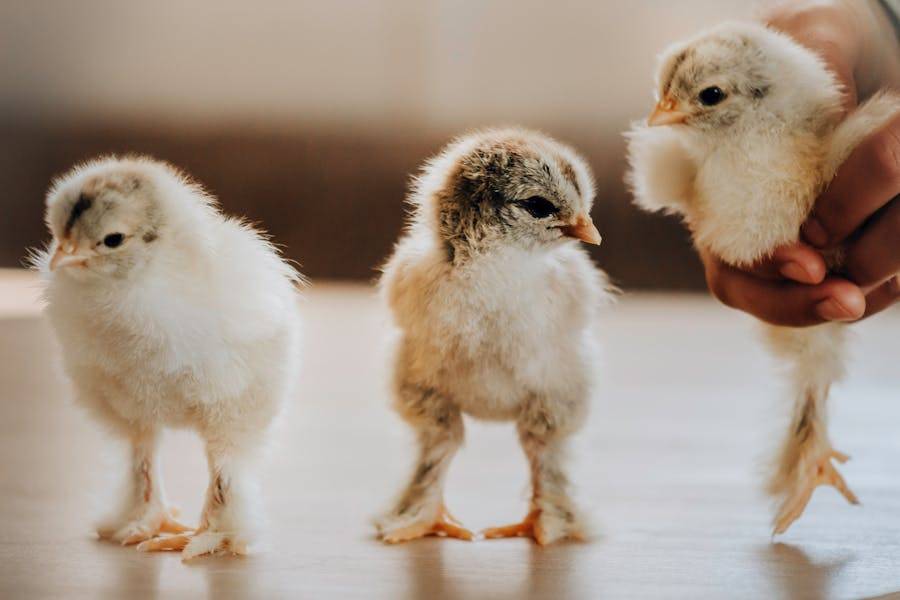Table of Contents
Chick marking is a crucial aspect of poultry farming, particularly in large flocks.

It involves identifying individual birds using various tools and techniques, such as leg bands, wing bands, toe punching, tattooing, feather clipping, dye marking, and electronic identification.
The primary aim of chick marking is to keep track of individual birds for purposes such as breeding, health monitoring, performance tracking, and more.
Importance of Chick Marking
Chick marking plays a vital role in effective flock management. It allows farmers to monitor the progress and health status of individual birds, facilitating early detection of diseases and prompt intervention.
Furthermore, it aids in record keeping, ensuring accurate data on each bird’s productivity, growth rate, and genetic lineage.
This detailed information is invaluable for making informed decisions about breeding, feeding, and overall flock management.
Method 1: Using Leg Bands
Leg bands are one of the most common methods used for marking chicks. These are circular rings made from plastic or metal that are placed around the bird’s leg.
Each band has a unique number or color for easy identification. To place a leg band, gently hold the chick and carefully slip the band over its foot and onto its leg.
Ensure the band is not too tight to restrict movement or too loose to slip off.
Pros and Cons of Leg Bands
Leg bands are relatively easy to apply and read, making them a popular choice among poultry farmers.
They cause minimal discomfort to the birds and can carry a considerable amount of information.
However, they can sometimes fall off or become obscured by dirt, making the numbers hard to read. Additionally, leg bands may cause injury if not properly fitted.
Method 2: Wing Banding
Wing banding involves attaching a small, numbered metal or plastic tag to the wing web of a chick.
To apply a wing band, you’ll need a specialized applicator. Using the applicator, punch a hole in the wing web and insert the band, ensuring it’s secure but not too tight.
Advantages and Disadvantages of Wing Banding
Wing bands are highly visible and difficult for the bird to remove. They’re also durable and can withstand harsh weather conditions.
However, they can be slightly more challenging to apply than leg bands and may cause temporary discomfort during application.
Method 3: Toe Punching
Toe punching involves making a small hole or notch in the webbing between a chick’s toes using a special tool called a toe punch.
Each toe can be punched in a different pattern, providing a unique code for each bird.
Considerations and Limitations of Toe Punching
Toe punching is a permanent method of identification, but it can be challenging to see the punches, especially on older birds. There’s also a risk of infection if the tool isn’t properly sterilized.
Method 4: Tattooing
Tattooing involves marking the skin of a chick with indelible ink. This method requires specialized equipment and skill to ensure the tattoo is clear and doesn’t harm the bird.
Benefits and Drawbacks of Tattooing
Tattoos are permanent and can carry complex information. However, they can fade over time and become hard to read. Moreover, the process can be stressful for the bird and requires expertise to execute correctly.
Method 5: Feather Clipping
Feather clipping involves cutting the feathers in a distinct pattern to identify individual birds. This method is quick and painless but must be repeated after each molt when the feathers grow back.
Pros and Cons of Feather Clipping
Feather clipping is a non-invasive, painless method of identification. However, it’s temporary and needs to be redone regularly. Also, it can be challenging to maintain a consistent pattern across a large flock.
Method 6: Dye Marking

Dye marking involves applying a safe, non-toxic dye to the feathers of the chick in a specific pattern. The dye used should be bright and visible from a distance, but it must also be safe for the bird.
Advantages and Disadvantages of Dye Marking
Dye marking is easy to apply and highly visible, making it an excellent choice for temporary identification. However, the dye can fade or wash off over time, and it will disappear when the bird molts.
Method 7: Electronic Identification Methods
RFID (Radio Frequency Identification) technology is an advanced method for chick marking.
It involves attaching a small chip to the bird, which emits a unique signal that can be read by a special scanner. This method allows for easy tracking and monitoring of individual birds.
Strengths and Weaknesses of Electronic Identification
RFID marking is highly accurate and efficient, allowing for real-time tracking and data collection. However, it’s also the most expensive method and requires specialized equipment and training to implement.
Things to Consider When Marking Chicks

Balancing Identification and Welfare
When marking chicks, it’s crucial to balance the need for identification with the welfare of the birds.
The chosen method should cause minimal discomfort and stress to the chicks. Always handle the chicks gently during the process to reduce anxiety and potential harm.
Longevity of the Mark
Consider how long you need the mark to last.
Temporary methods like dye marking and feather clipping may be adequate for short-term identification, but for long-term tracking, you might need to consider more permanent options like leg bands, wing bands, or even RFID technology.
Ease of Application and Reading
The ease of applying and reading the marks is another critical factor. Some methods, like leg bands and wing bands, are relatively straightforward to apply and read.
Others, like tattooing or toe punching, may require more skill and effort.
Cost and Resources
The cost and resources available to you can also influence the method you choose.
While some methods like dye marking or feather clipping are relatively inexpensive, others like RFID technology can be costly and require specialized equipment.
Size and Age of the Chick
The size and age of the chick can affect the suitability of different marking methods. For example, leg bands come in different sizes and may not fit very young or small chicks.
Similarly, methods like toe punching or tattooing may not be suitable for very young chicks.
Regulatory Compliance
In some regions or for certain purposes (like commercial farming), there may be regulations governing how chicks can be marked.
Be sure to check any local laws or industry standards before deciding on a marking method.
Conclusion
Chick marking is an essential practice in poultry farming that aids in tracking and managing individual birds in a flock.
Various methods can be used, each with its advantages and drawbacks. These include leg bands, wing bands, toe punching, tattooing, feather clipping, dye marking, and electronic identification.
The choice of the chick marking method depends on several factors, including the size of the flock, the purpose of identification, the available resources, and the farmer’s expertise.
It’s crucial to choose a method that is safe, effective, and suitable for your specific needs. Remember, the welfare of the chicks should always be the top priority.
